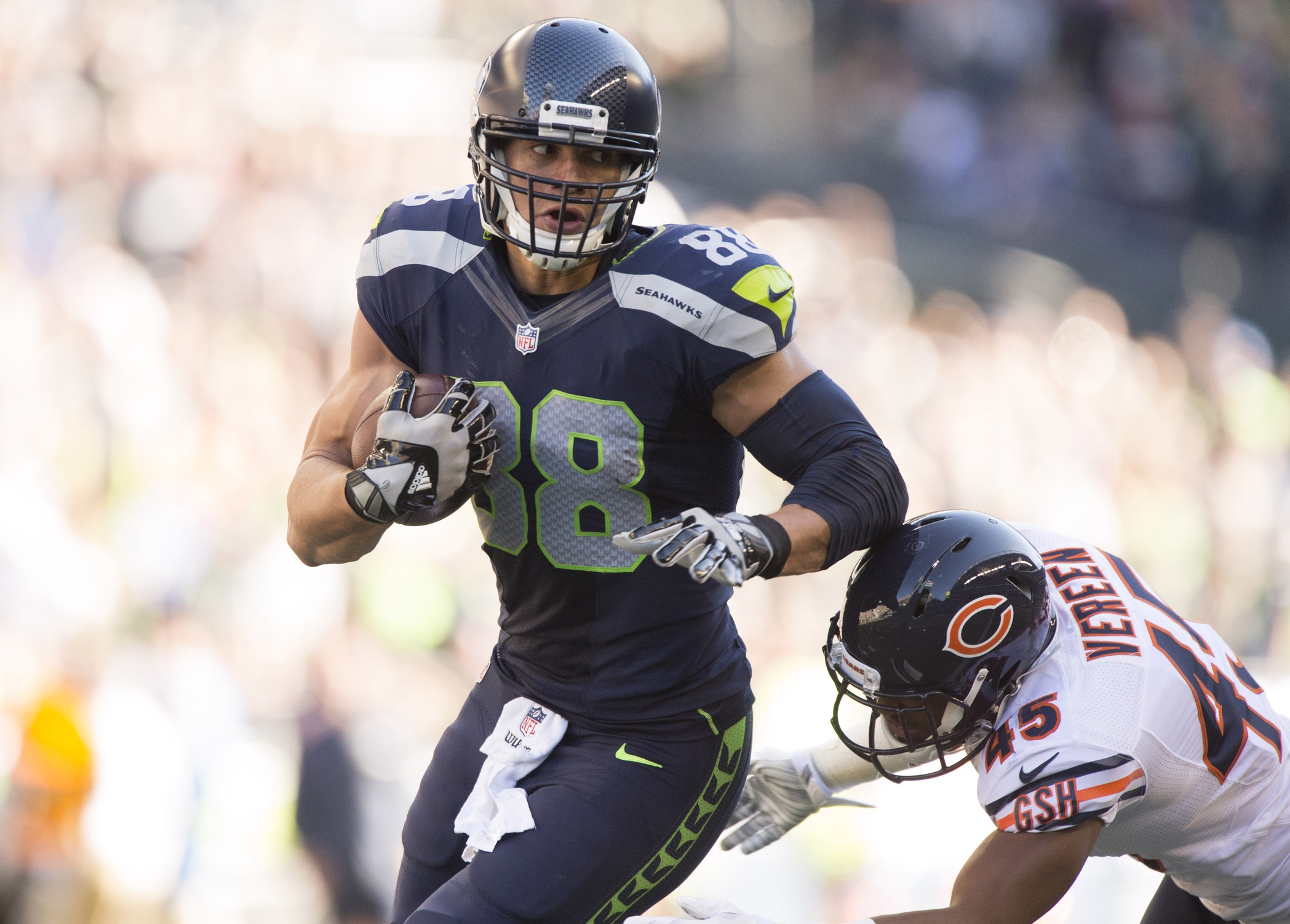A patellar tendon rupture is one of the most-painful injuries in the world, and it’s also one of the toughest to recover from.
Seattle Seahawks tight end Jimmy Graham has to recover from one this offseason and could see some adverse effects on the field while he regains his explosion.
Patellar tendon ruptures are an injury where the tendon at the front of the knee tears completely. According to ESPN’s Stephania Bell, this injury can destroy careers:
“A study just published in June of this year in the American Journal of Sports Medicine looked at orthopedic procedures on over 550 NFL athletes, and of all the different surgeries that these guys have, those who fared the worst when it comes to rate of return to play and performance metrics like yards gained and touchdowns scored, [it was] patellar tendon repair. And their careers were shortened overall significantly. It’s not to say that one individual can’t come back and be phenomenal, but it’s telling you that the odds are against them in terms of returning to form.”
Graham has arguably been one of the best receiving tight ends of the last two decades. He averages five catches for 60 yards and 0.6 touchdowns per game. His career averages over a full season would come out to 80 catches, 960 yards and nine touchdowns — numbers future Hall of Famer Tony Gonzalez averaged during his prime.
Graham’s torn patellar tendon would have to recover tremendously for him to instantly be back to the same level that he was at towards the middle of his first season with Seattle, when he had finally found some chemistry with star quarterback Russell Wilson.
With two years remaining on his deal, Graham has a ton to prove before he’s given the big bucks. It’s also important to note that any further setbacks on the injury front could put his roster spot in jeopardy after this season.
Since he basically detached the front of his quad muscles when the patellar tendon ruptured, it’s going to be a massive uphill challenge.
The Seahawks’ tight end will have to make sure he balances his strength training and doesn’t overcompensate for the recovery and weakness in his quad that comes from the patellar tendon tear.
Graham is one of the most-dynamic options in the NFL when he is 100 percent. But if for whatever reason, he isn’t 100 percent this season and can’t duplicate his previous success, it’s going to be bye-bye for Graham in Seattle.
Why would the team pay $10 million for someone who isn’t playing like the best tight end in the NFL anymore?

